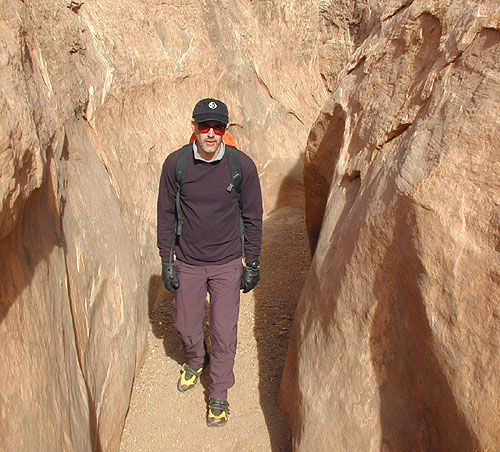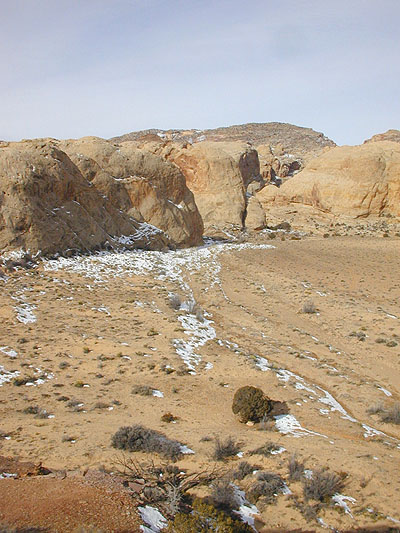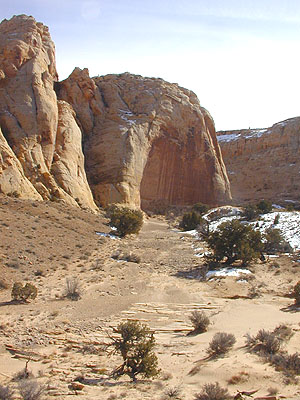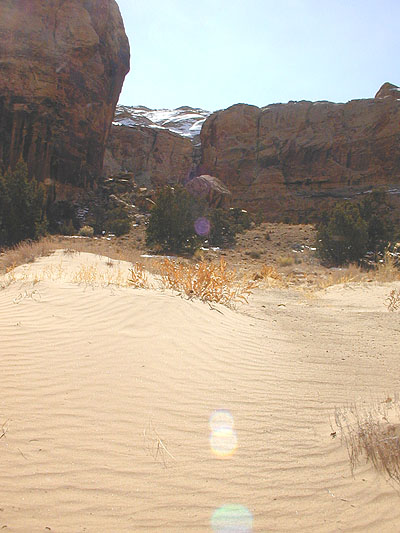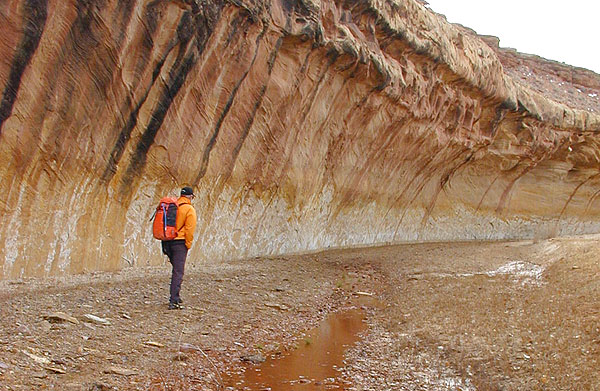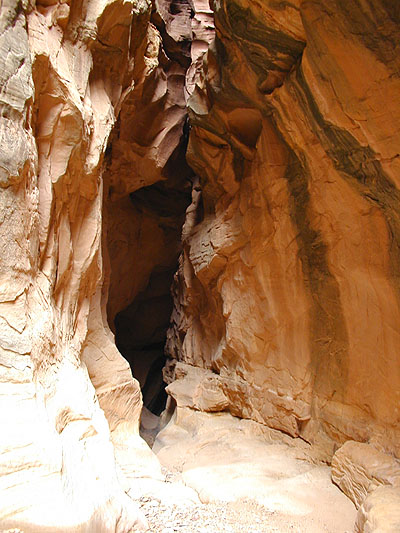New Canyon, Iron Wash, and Wild Horse Canyon, San Rafael Swell
Had to get out of town! When the weather is consistently cold, the best way to get out is to make plans far ahead with people you don't know real well - then you have to go. So I made plans far in the future with Charlie Oliver from Boulder, who I had known for a while but never done a trip with. Since he was driving from Boulder, my chickening out just because it was too friggin' cold was not an option.
Morning brought us a view of the reef – with 6″ of snow on it. Plus serious cold. Highlight of our camping spot was a silver fox that visited us looking for scraps.
We quickly re-shuffled plans down in ambition, and decided to check out Wild Horse Canyon and the Wild Horse Window arch, right near the Goblin Valley road junction.
I'd always wanted to do a counter-weight rappel through this wonderful arch, and this was the perfect opportunity. Went off without a hitch. Here Charlie demonstrates clipping your pack for a more casual rappel. Now that it had warmed up a little, we used the "cup half full" approach and decided we should do something a little more ambitious...
For the afternoon, we chose a fairly short project I thought would not be too technical, and that mostly faced south. I call it Congregationalist Draw, as it is a short canyon dropping into Upper Chute Canyon, down and across from Baptist Draw.
By moving up in altitude 800 feet, we were now in the land of snow – about 6″ with an annoying breakable crust.
Tramping off across the prarie brought us fine views of the Henries and Chute Buttress, and to the head of Congregationalist Draw.
More scrambling and, gulp, suddenly the canyon drops off 125 feet. Having only a single 200 foot rope, I was quite glad Charlie had 50 feet of slings with him. And thus the canyon ends, bringing us very shortly to the transverse canyon exit north.
More postholing took us back to the car. My those sunsets in winter are just so special, especially when you’re still 2 miles from the car…
Sunday morning found us hiking up Iron Wash, looking for the North Fork. Chosen for it's low altitude and sunny aspects, North Iron Wash was supposed to have some nice narrows worth checking out. We parked by an uninspiring wash with many tamarisks and a small flow of water. While cowed up pretty good, the start of Iron Wash cuts into the desert floor and provides a nice respite from the cold and snow we saw the day before.
After 15 minutes, the North Fork of Iron Wash comes in from the right, it’s mouth masked by brush and a small slimey pool. Being ‘expert’ canyoneers, we walked right by it the first time, and down the main branch for a while before noticing our error.
Walking in Iron Wash is reminiscent of the Escalante, and rather unlike most canyons in the Swell. The wide, sandy wash cuts through large Navajo domes for several miles before getting serious.
Being a deep wide canyon, sand tends to get blown into the North Fork and is unable to escape, forming picturesque small dunes.
Yes, finally some steep, sweeping canyon walls.
A short section of nice narrows led us to a slot in the wall, where the wash gets seriously narrow. About 5 feet in we came to a dark pothole, so dark that we could not see the bottom. Was it 5 feet down or 10 feet down? We could not really tell, but it looked difficult to get out of, and continuing past it would require some serious 'Mae West' chimneying. Slings overhead suggested that ropes were the standard mode of travel from above. Left for another day.




